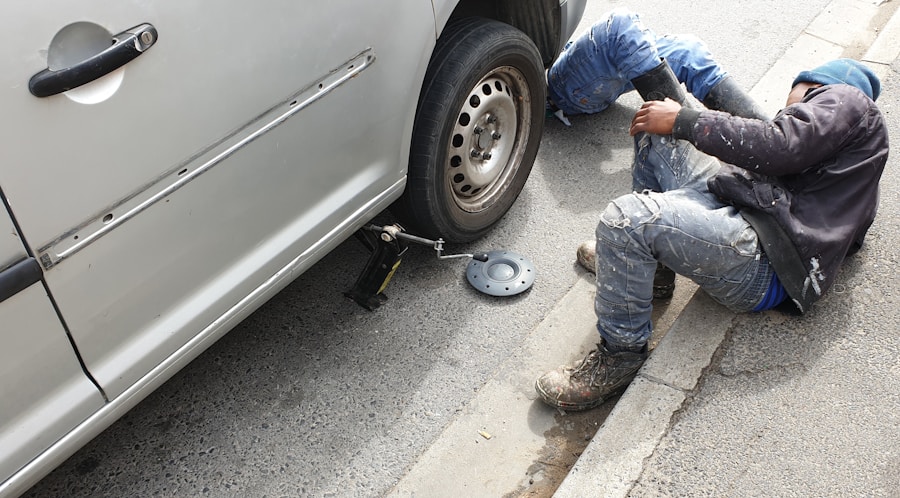Safety violations in the workplace refer to breaches of established safety protocols and regulations designed to protect employees, clients, and the general public. These violations can range from minor infractions, such as not wearing personal protective equipment (PPE), to major breaches, like failing to adhere to safety standards that could lead to catastrophic accidents. The implications of these violations extend beyond immediate physical harm; they can also have significant repercussions on a business’s insurance coverage.
Insurance companies often assess the safety practices of a business when determining premiums, coverage limits, and overall risk profiles. A history of safety violations can signal to insurers that a business is a higher risk, potentially leading to increased costs or even denial of coverage. Understanding the relationship between safety violations and insurance is crucial for business owners.
When a workplace incident occurs due to a safety violation, it can trigger claims that may lead to higher premiums or policy cancellations. Insurers typically evaluate the frequency and severity of claims when determining the risk associated with a particular business. If a company has a pattern of safety violations, it may be viewed as negligent, prompting insurers to reconsider their willingness to provide coverage.
This dynamic creates a compelling incentive for businesses to prioritize safety and compliance with regulations, not only to protect their employees but also to maintain favorable insurance terms.
Key Takeaways
- Safety violations can lead to insurance issues, including increased premiums or policy cancellation.
- Consequences of safety violations on insurance can include higher premiums, loss of coverage, or difficulty finding new coverage.
- Insurance companies may handle safety violations by conducting inspections, increasing premiums, or canceling policies.
- If your insurance drops you for safety violations, take steps such as addressing the violations, seeking alternative coverage, or appealing the decision.
- Policyholders have legal rights and protections, including the right to appeal insurance decisions and the right to seek alternative coverage.
Consequences of Safety Violations on Insurance
Increased Insurance Premiums
One of the most immediate effects is the potential increase in insurance premiums. When an insurer identifies a pattern of safety violations, they may classify the business as high-risk, leading to elevated costs for coverage. For instance, a construction company that has multiple incidents of workers not using fall protection equipment may see its liability insurance premiums rise significantly after each claim.
Policy Cancellation or Non-Renewal
In more severe cases, repeated safety violations can result in the cancellation or non-renewal of an insurance policy. Insurers are not obligated to continue coverage for businesses that demonstrate a disregard for safety regulations. For example, if a manufacturing facility consistently fails to comply with OSHA standards, an insurer may decide that the risk is too great and opt not to renew the policy at the end of its term.
Broader Business Implications
The loss of insurance can also hinder a company’s ability to secure contracts or partnerships, as many clients require proof of adequate insurance before engaging in business. This situation can leave businesses scrambling to find new coverage, often at higher rates or with more restrictive terms.
How Insurance Companies Handle Safety Violations

Insurance companies have specific protocols for handling safety violations that occur within insured businesses. When a claim is filed due to an incident linked to a safety violation, insurers typically conduct a thorough investigation. This process involves reviewing incident reports, interviewing witnesses, and assessing compliance with safety regulations at the time of the incident.
The findings from this investigation play a critical role in determining whether the claim will be paid and how it will affect future coverage. If an insurer finds that a claim resulted from a preventable safety violation, they may deny the claim altogether or reduce the payout based on the degree of negligence involved.
In such cases, the insurer may also flag the business for further review, leading to potential increases in premiums or policy adjustments. Insurers often communicate their findings to policyholders, providing insights into how safety practices can be improved to mitigate future risks.
Steps to Take if Your Insurance Drops You for Safety Violations
| Steps to Take | Description |
|---|---|
| Review the Policy | Check the policy to understand the specific safety violations that led to the insurance being dropped. |
| Address Safety Concerns | Take necessary steps to address the safety violations and improve safety measures within the business. |
| Seek Alternative Insurance | Research and reach out to other insurance providers to find alternative coverage for the business. |
| Document Safety Improvements | Keep detailed records of safety improvements made to demonstrate commitment to safety to potential insurers. |
| Consult with an Attorney | If necessary, seek legal advice to understand options and potential legal recourse. |
If a business finds itself in the unfortunate position of having its insurance dropped due to safety violations, there are several steps it can take to address the situation effectively. First and foremost, it is essential to understand the reasons behind the cancellation. Reviewing any correspondence from the insurer can provide clarity on specific violations or incidents that led to this decision.
This understanding is crucial for developing a plan to rectify issues and improve safety practices moving forward. Once the reasons for cancellation are clear, businesses should take immediate action to address any identified safety concerns. This may involve conducting a comprehensive safety audit, retraining employees on proper safety protocols, and implementing new policies or procedures designed to enhance workplace safety.
Documenting these changes is vital; having a clear record of improvements can help when seeking new insurance coverage. After addressing safety issues, businesses should begin researching alternative insurance providers that specialize in high-risk industries or those willing to work with companies that have made significant strides in improving their safety records.
Legal Rights and Protections for Policyholders
Policyholders have specific legal rights and protections when it comes to their insurance coverage, particularly regarding cancellations due to safety violations. Most states require insurers to provide written notice before canceling a policy, outlining the reasons for cancellation and allowing policyholders an opportunity to address any issues. This notice period can vary by state but typically ranges from 10 to 30 days.
During this time, policyholders can take steps to rectify any identified problems and appeal the cancellation if they believe it is unjustified.
For instance, if an insurer cancels a policy without sufficient evidence of negligence or fails to follow proper procedures during the cancellation process, policyholders may have grounds for legal recourse.
Consulting with an attorney who specializes in insurance law can provide valuable guidance on navigating these situations and understanding one’s rights under state law.
Importance of Maintaining a Safe Work Environment

Maintaining a safe work environment is not only a legal obligation but also a fundamental aspect of running a successful business. A safe workplace fosters employee morale and productivity while reducing the likelihood of accidents and injuries that can lead to costly insurance claims. Companies that prioritize safety often experience lower turnover rates and higher employee satisfaction, which can translate into better overall performance and profitability.
Moreover, a commitment to workplace safety enhances a company’s reputation within its industry and among clients. Businesses known for their strong safety records are more likely to attract clients who value responsible practices and are willing to pay premium prices for services rendered by reputable firms. In contrast, companies with poor safety records may struggle to secure contracts or partnerships due to perceived risks associated with their operations.
Therefore, investing in safety measures is not merely about compliance; it is an integral part of strategic business management.
Tips for Preventing Safety Violations in the Workplace
Preventing safety violations requires proactive measures and ongoing commitment from all levels of an organization. One effective strategy is implementing regular training programs that educate employees about workplace hazards and safe practices relevant to their specific roles. These training sessions should be interactive and engaging, allowing employees to ask questions and participate in discussions about safety concerns they may encounter on the job.
Another critical aspect of preventing safety violations is fostering a culture of accountability where employees feel empowered to report unsafe conditions without fear of retaliation. Establishing clear channels for reporting hazards and encouraging open communication about safety issues can help identify potential problems before they escalate into serious incidents. Additionally, conducting routine inspections and audits of workplace conditions can help identify areas for improvement and ensure compliance with established safety standards.
Seeking Alternative Insurance Options
When faced with challenges related to safety violations and insurance coverage, exploring alternative insurance options becomes essential for businesses seeking stability and protection. Many insurers specialize in high-risk industries or offer tailored policies designed for businesses with unique needs related to workplace safety. Engaging with an experienced insurance broker can provide valuable insights into available options and help navigate the complexities of finding suitable coverage.
In addition to traditional insurance providers, businesses may also consider alternative risk management strategies such as self-insurance or captive insurance arrangements. These approaches allow companies greater control over their risk management processes and can be particularly beneficial for organizations with strong safety records looking to reduce reliance on conventional insurance markets. By exploring diverse options and remaining committed to improving workplace safety, businesses can secure the coverage they need while minimizing risks associated with potential future violations.
If you are interested in learning more about home insurance and how it can protect you in case of accidents or disasters, check out this informative article on home insurance. Understanding the different types of coverage available can help you make informed decisions when selecting a policy that best suits your needs. It’s important to be aware of the potential consequences of safety violations and how they can impact your insurance coverage, as discussed in the article “Can Your Insurance Drop You After Too Many Safety Violations?” Be sure to also explore other articles on Fair Shot Financial for more valuable insights on financial planning and insurance options.
FAQs
What are safety violations in the context of insurance?
Safety violations in the context of insurance refer to any actions or behaviors that increase the risk of accidents or injuries. This can include traffic violations, workplace safety violations, or any other actions that could lead to insurance claims.
Can insurance companies drop you for too many safety violations?
Yes, insurance companies have the right to drop policyholders if they have too many safety violations. This is because the increased risk associated with safety violations may make the policyholder too costly to insure.
What are some examples of safety violations that could lead to being dropped by your insurance?
Examples of safety violations that could lead to being dropped by your insurance include multiple speeding tickets, DUI convictions, workplace safety violations, or a history of filing frequent insurance claims due to accidents.
Is there a limit to how many safety violations can lead to being dropped by your insurance?
There is no specific limit to the number of safety violations that can lead to being dropped by your insurance. Each insurance company has its own underwriting guidelines and may assess risk differently.
What can I do if my insurance drops me due to safety violations?
If your insurance drops you due to safety violations, you may need to seek coverage from another insurance company. It’s important to work on improving your driving record and addressing any safety issues to demonstrate to potential insurers that you are a responsible policyholder.


